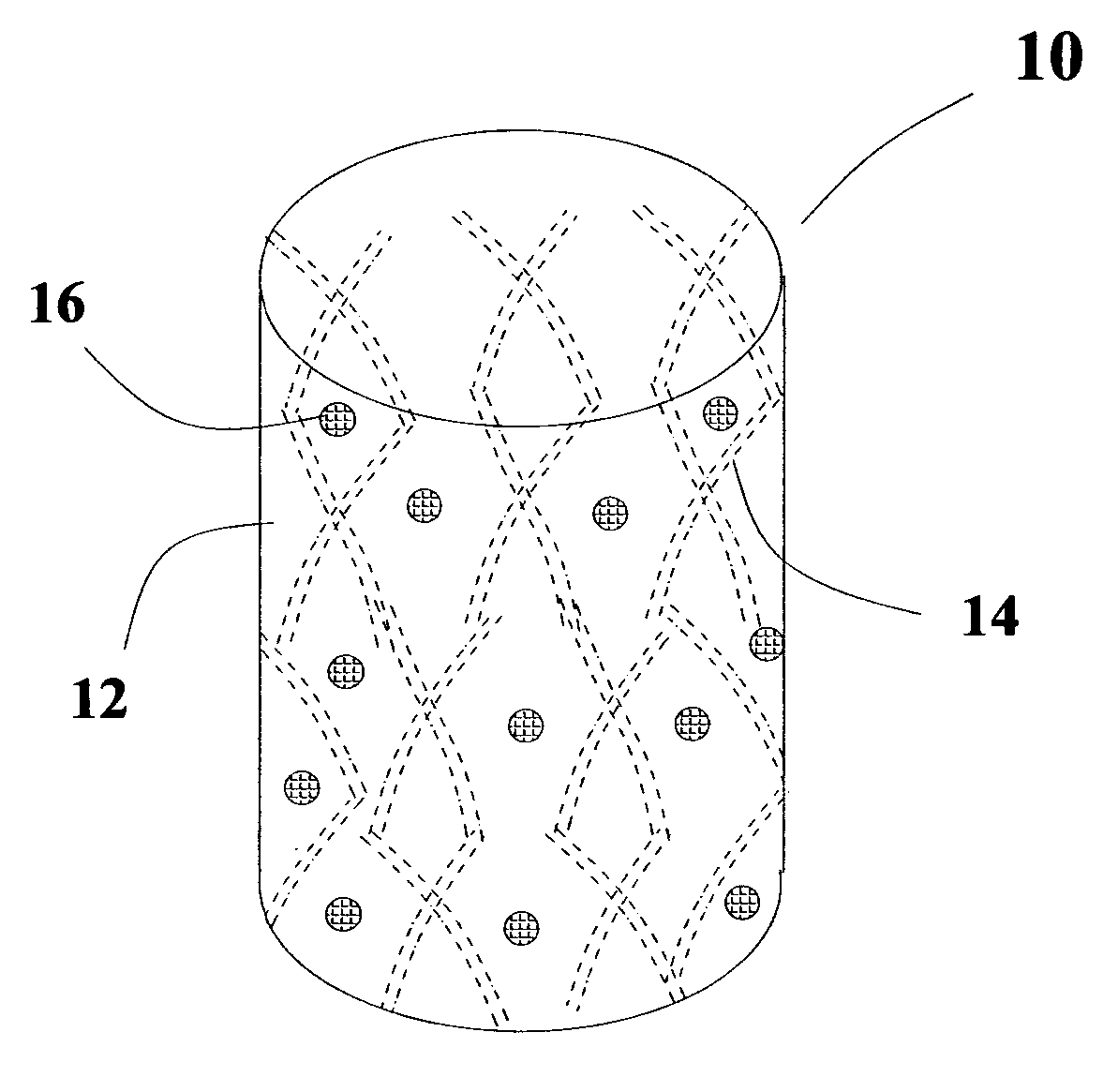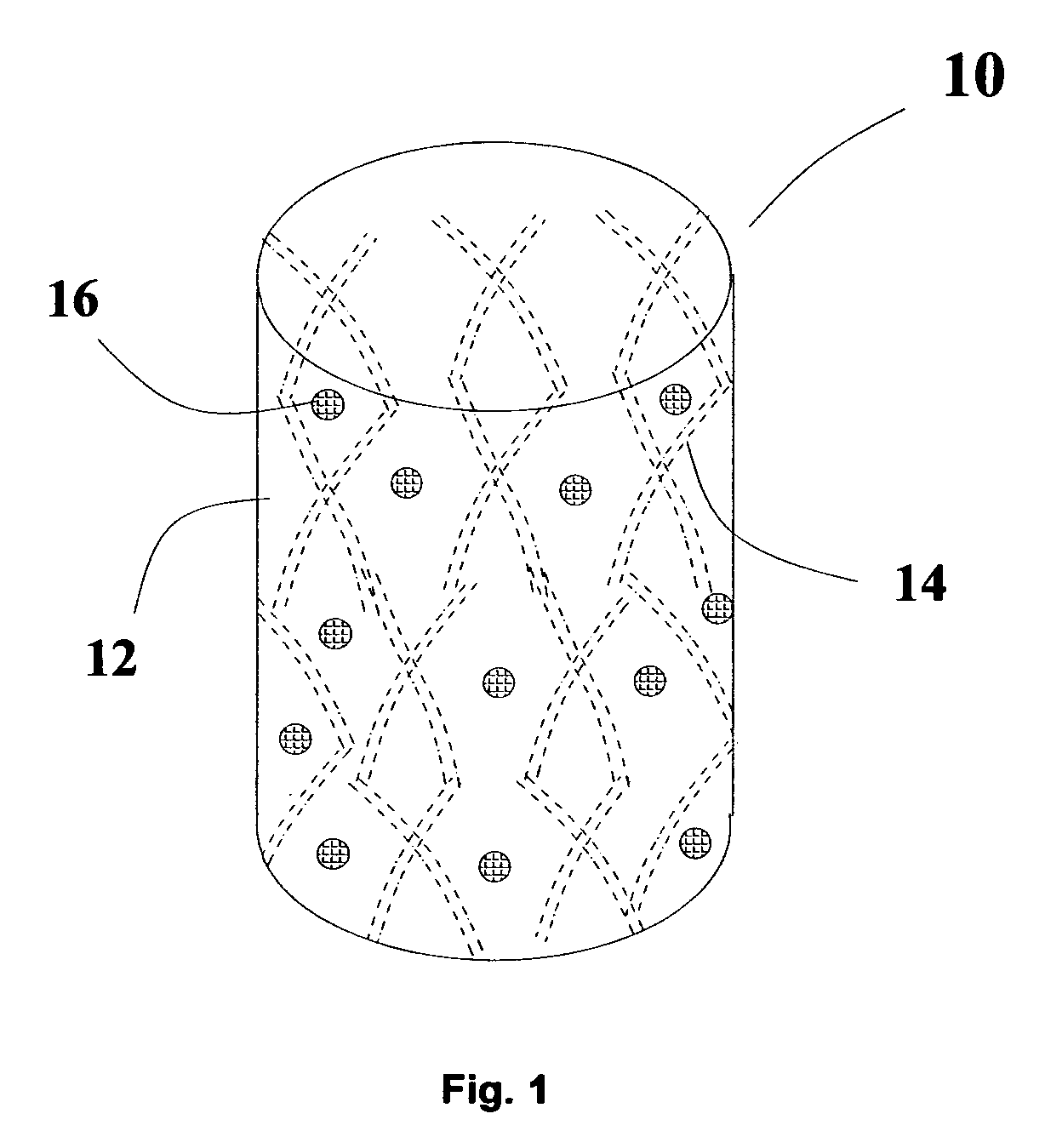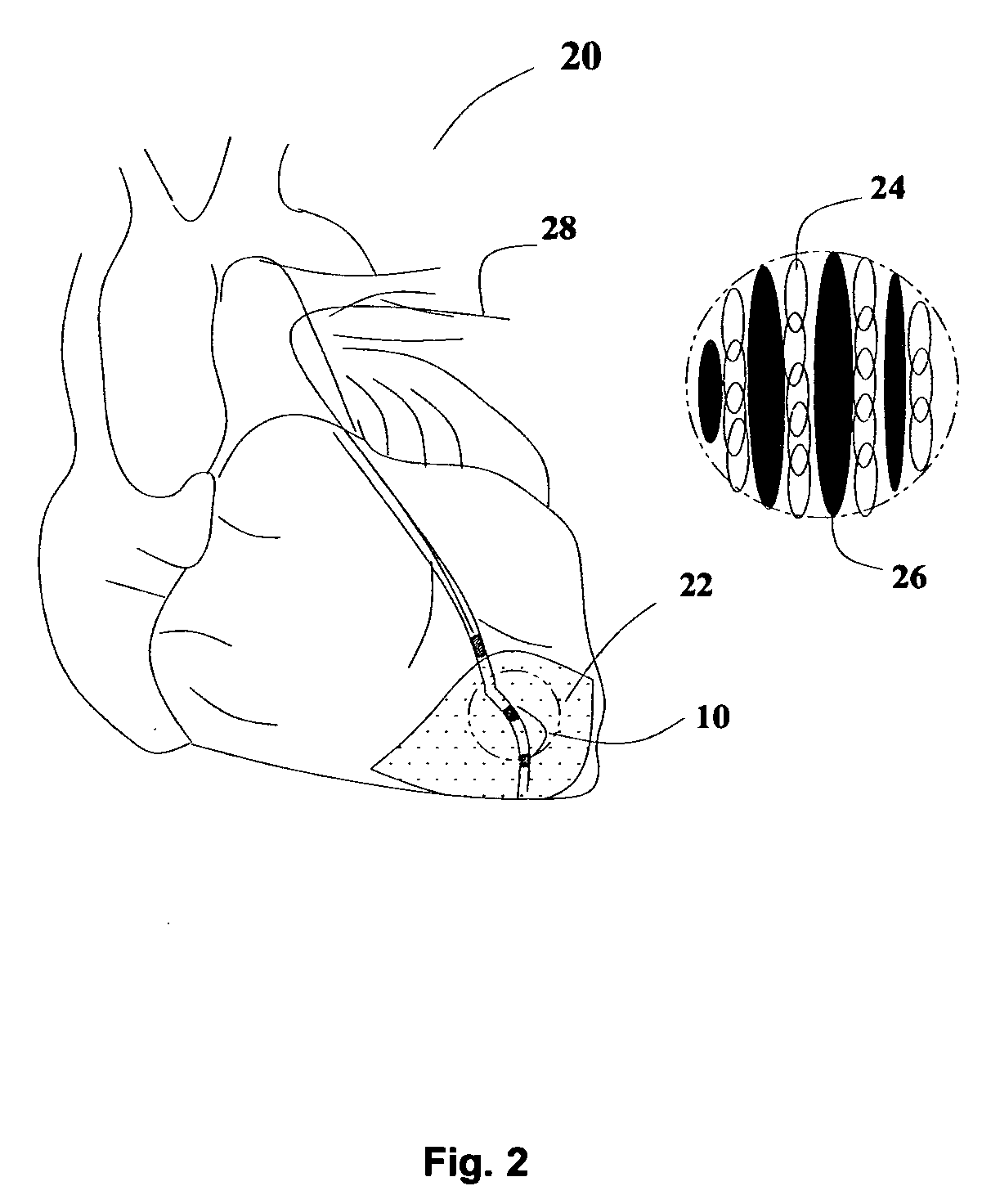Methods and apparatus for in vivo cell therapy
a cell therapy and in vivo technology, applied in the field of in vivo cell therapy, can solve the problems of weakened heart muscle pumping ability, reduced heart pumping ability, and damage to heart muscle, and achieve the effect of repopulation of heart muscle and restoration of heart pumping function
- Summary
- Abstract
- Description
- Claims
- Application Information
AI Technical Summary
Benefits of technology
Problems solved by technology
Method used
Image
Examples
Embodiment Construction
[0013] The present invention is directed to methods and apparatus for transplanting functional cells into failing heart muscle to cure heart disease. While the present invention is described in detail as applied to heart, those of ordinary skill in the art will appreciate that the present invention can be applied to other organs / sites.
[0014]FIG. 1 illustrates a general example of cell-composed medical device to one embodiment of the present invention. The cell-composed medical device 10 comprises of cell growth matrix 12 and supporting structure 14. Cells in appropriate culture medium 16 are grown in matrix 12. Cell growth matrix 12 is attached to supporting structure 14. Supporting structure 14 is expandable and / or deformable, such as stents. Cells can grow, differentiate and migrate in matrix 12 as necessary prior to cell-composed medical device 10 delivered to the infarct-related artery.
[0015] Sources of cells could be from human embryonic stem cells (hES), human embryonic germ...
PUM
 Login to View More
Login to View More Abstract
Description
Claims
Application Information
 Login to View More
Login to View More - R&D
- Intellectual Property
- Life Sciences
- Materials
- Tech Scout
- Unparalleled Data Quality
- Higher Quality Content
- 60% Fewer Hallucinations
Browse by: Latest US Patents, China's latest patents, Technical Efficacy Thesaurus, Application Domain, Technology Topic, Popular Technical Reports.
© 2025 PatSnap. All rights reserved.Legal|Privacy policy|Modern Slavery Act Transparency Statement|Sitemap|About US| Contact US: help@patsnap.com



